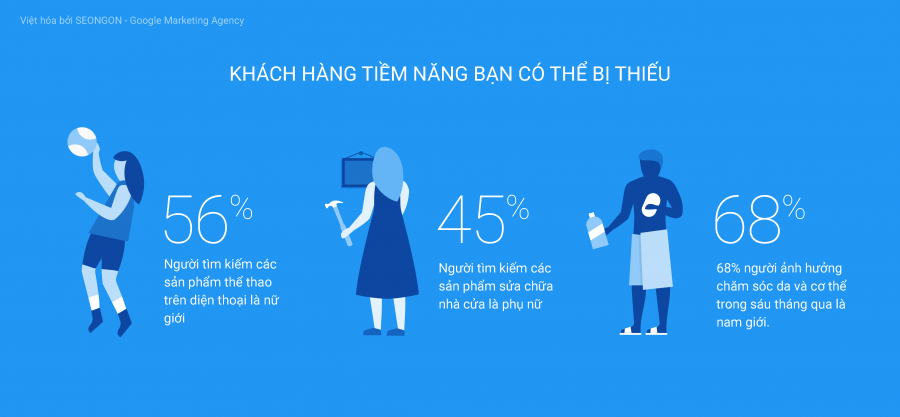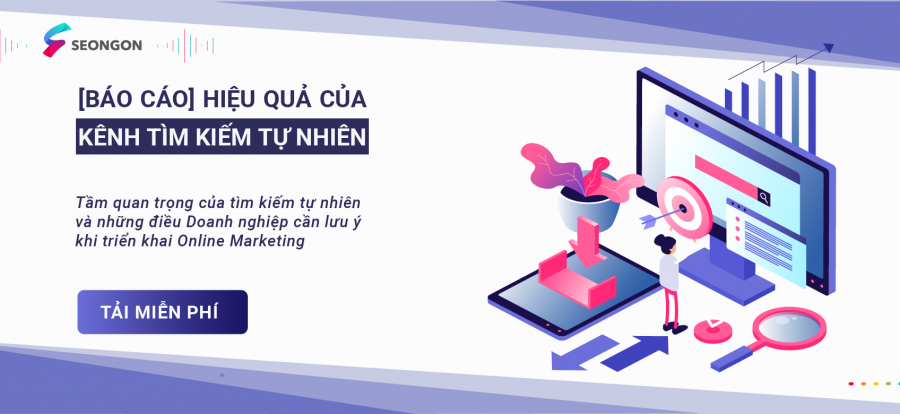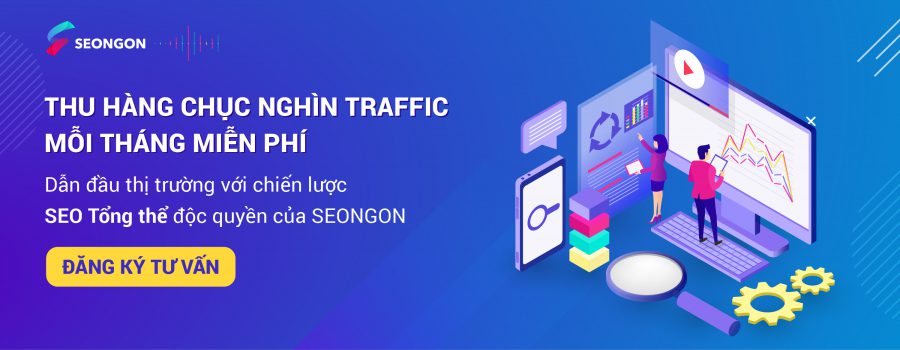Marketers who rely solely on demographics to reach customers are at risk of missing out on more than 70% of potential phone buyers. Join SEONGON to explore the article below to better understand Consumer Intent through the sharing of Lisa Gevelber, Google's vice president of marketing.
For years, Marketers have used demographics to represent users who might be interested in their products. But Google research has shown that Marketers who try to reach their customers based solely on demographics risk losing more than 70% of potential buyers on the phone.
Why?
Because demographics don't help us understand what we really need to know - it's the Consumer Intent - what users are looking for in the exact moment or place they expect to find. out of that.
The true intention of the customer will defeat the identity that we initially outlined, and appears at the time when the user arose to be the trump card to win. When someone has a desire or need, they will look to a smartphone, whether it's a Karate beginner looking to see an expert on YouTube and a mom looking for a good promotion deal. Best to buy a pair of sneakers. As demand increases, people will turn to Search or YouTube to find answers, discover new things, and make decisions. We call this a moment of intent to fill the user mind, micro moment. And this is the best opportunity for Marketers to connect with users at the exact moment when they already know what to look for.
Understanding "Consumer Intent" and meeting users in the right moment is the key to the attention and attention of consumers.
1. Relying on demographics is limited!
While demographics have always had a place in Playbook Marketing, brands need to understand and respond with the intention of being better positioned and helpful to all potential customers, not just those of age. and gender match.

With video games, you would think the people who buy video games are mostly young men. But the data showed that only 31% of mobile searchers were male between the ages of 18 and 34. If based solely on demographic goals, you missed 69% of mobile users. Clearly interested in buying next games.
In this case, if you are a marketer who wants to reach customers with video ads and targets men 18 to 34, you'll miss 71% of potential YouTube-related buyers. As content on YouTube is quickly becoming a guide for new buyers and game guides, mobile users are watching videos to learn how to make and discover their passion. But not everyone is the same, users will come to YouTubue with different intentions, some want advice, others want inspiration, and others want to rate the product.

Or with children's products. According to Google research, 40% of baby product buyers live in households with no children. The same is true for 52% of people who have an impact on children's products, they can be grandparents, cousins, friends and colleagues. Searching is the number 1 way for them to learn about these products.
As you can see, if you want to reach valuable customers, demographics are not enough. Marketers need to consider the intention of the user from the first signs to get the affection, mind and the budget of consumers.

Home Depot is a practical example of a brand that understands the power of intent consumers. A few years ago when the trend of "Do it yourself" was gradually shifting to phones, especially YouTube, this trend helped users to learn everything from "How to tile bathroom" to "How to build". outdoor fireplace. ” To take advantage of these, Home Depot has built a Content Marketing strategy around "how-to" videos on YouTube. Today, the collection has hundreds of videos, with the top 10, each reaching millions of views or more. Home Depot's full "How-to" collection has received over 48 million views.
"Mobile has changed the way we connect with customers a lot at The Home Depot," said Trish Mueller, senior vice president and chief marketing officer of The Home Depot. “We are now highly focused on how to use Digital to deliver to our customers' needs throughout the day and step by step experience their home improvement.
2. Let's start with the Intent moments.
Always on the user's search journey
When your potential customers turn to Google and YouTube in the moments they need to learn about something, make sure you are there.
Use Google Trends to explore search trends and queries in your catalog to understand what consumers are looking for. In moments of intent make sure you are there and provide things that are useful to the user.
Useful to users
Once you've made sure you're on the user's search journey, you need to be useful in the meantime. Otherwise they will switch to another brand. Research with Think with Google shows that 51% of smartphone users have moved to a different company than originally intended because that company has provided useful information to them.
Think about unique, tangible ways your brand can help solve problems or make life easier in real time in a micro moment. Here are some examples for you to think:
- Provide a summary of local inventory ads so that users can see what is available near that locality.

- Develop instructional videos.
- Provides the ability for consumers to pay without interruption with the "buy now" button.

Consumer is playing an important role in Online Marketing strategy. Understanding "Consumer Intent" and meeting users in the right moment is the key to getting consumers' emotions, minds and budgets. Recently, an SEO performance report showed that SEO has helped Marketers improve Consumer Intent detection. This has a strong impact on traffic and conversion rates compared to SEO gives businesses.

What questions or comments do you have about Consumer Intent? Please comment below this article or discuss in the community "Ads by SEONGON - the place to share and ask questions about the best Google ads".
Join in by clicking on the link: https://www.facebook.com/groups/ads.by.SEONGON/
Source: Think with Google
SEONGON - Google Marketing Agency
*** Learn about SEONGON's Overall SEO strategy at:



0 Comments